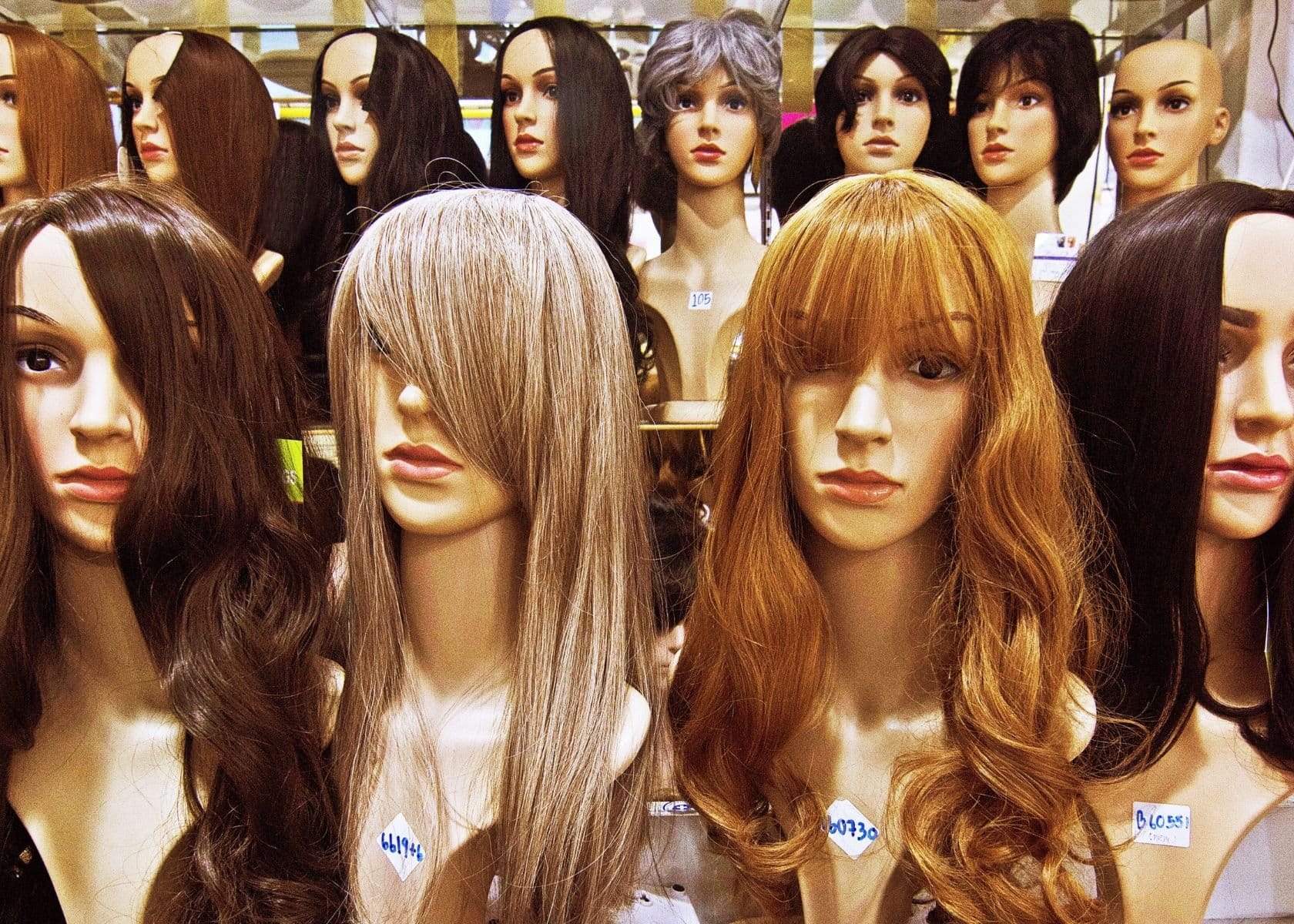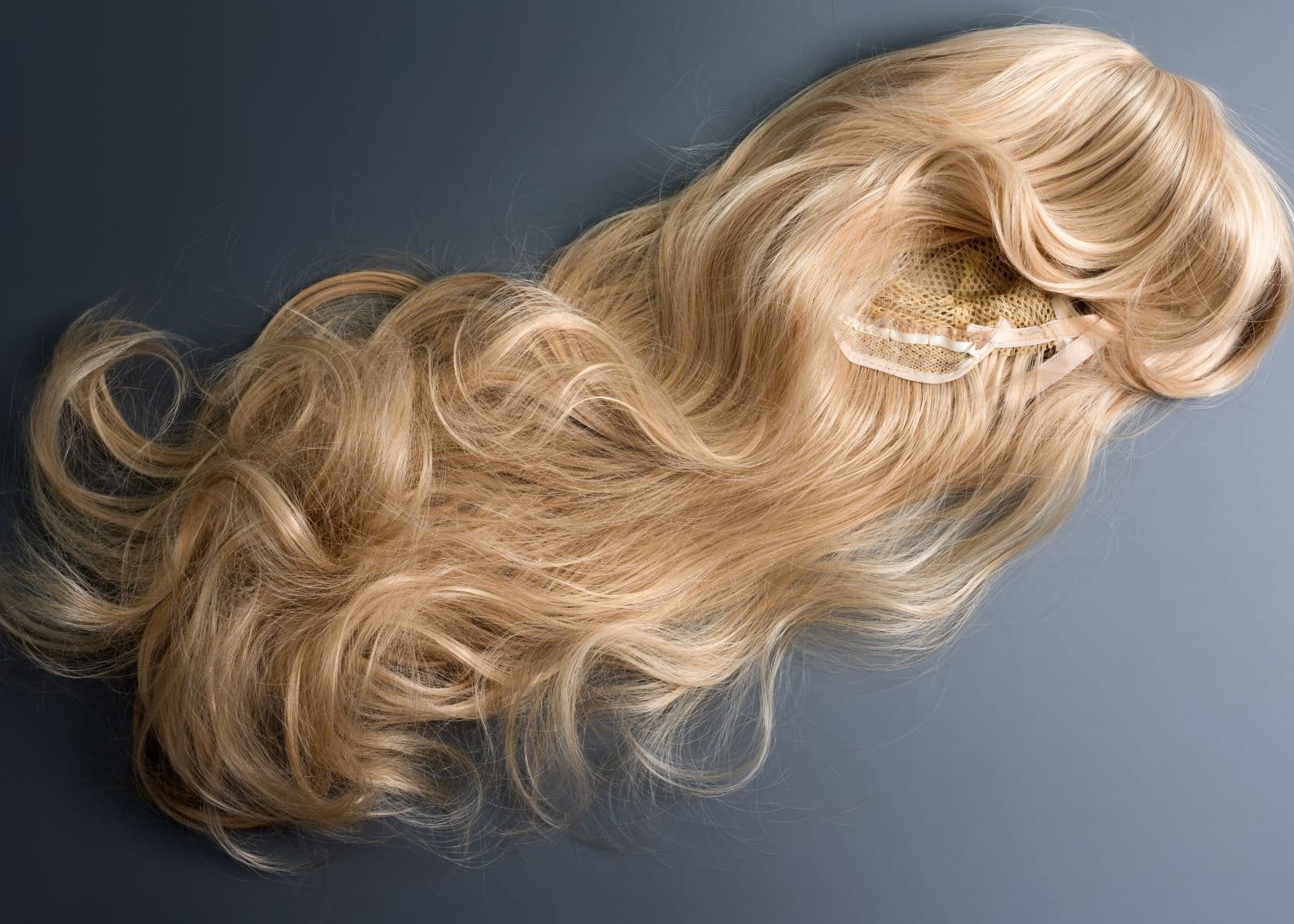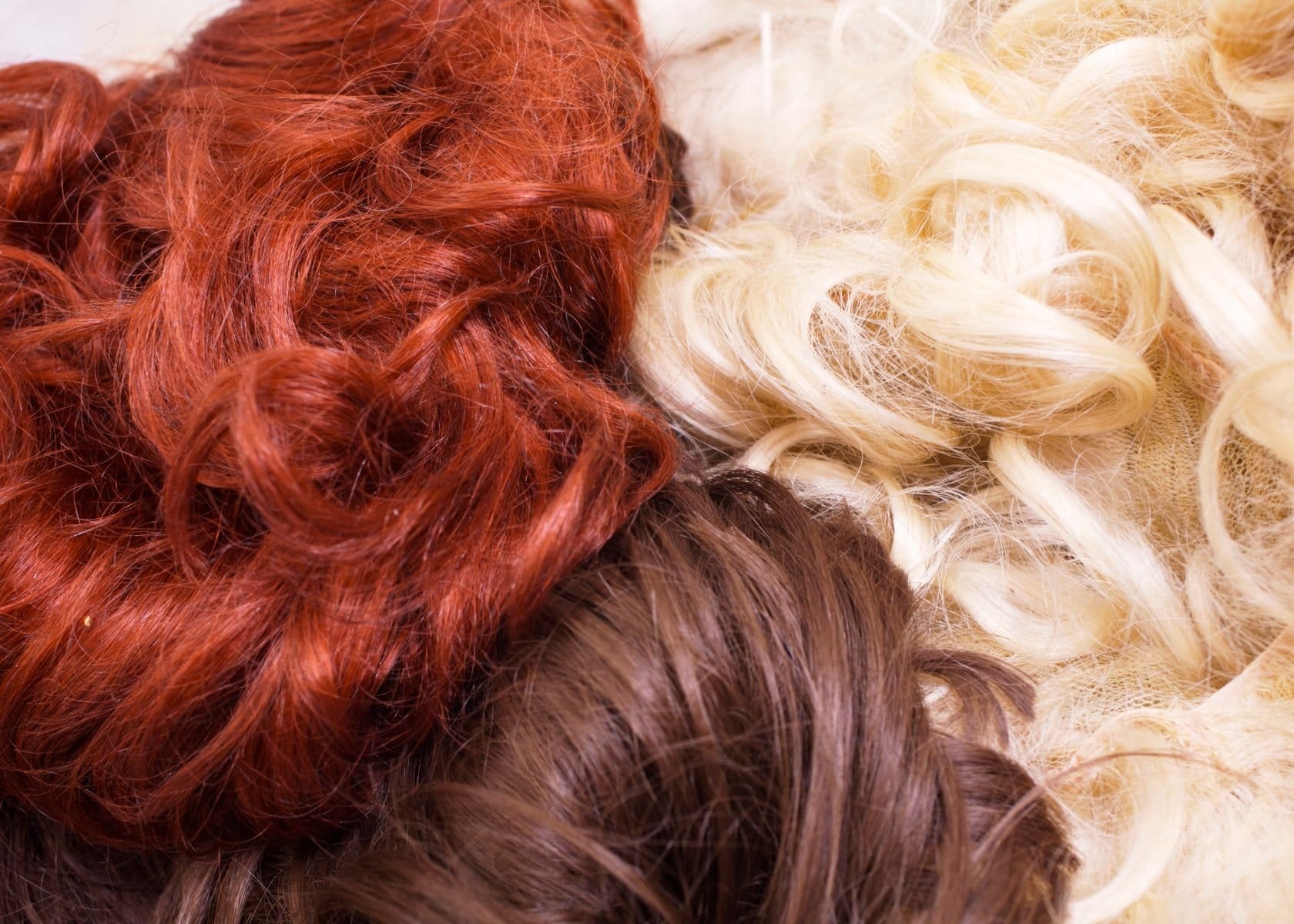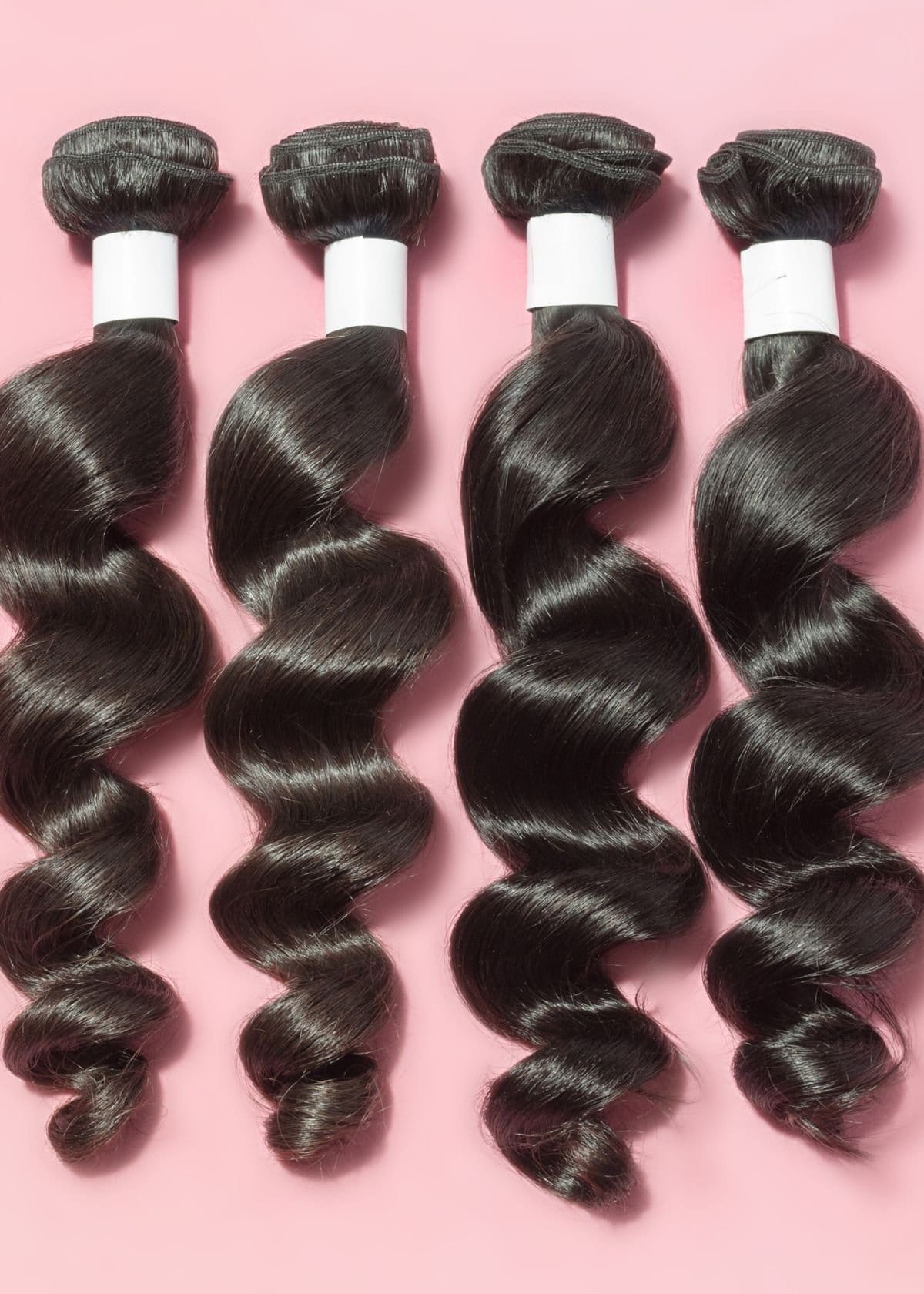Human hair wigs are amazing creations that start their journey from real people's heads in places like India and China, which lead the world in sending out human hair. These wigs don't just pop up on store shelves; they come from generous individuals who either donate or sell their locks to make sure others can enjoy a full head of hair.
Crafty artisans take this donated hair and carefully handcraft each wig, strand by strand, onto a cap that fits just right. They are not your run-of-the-mill accessories – these wigs behave just like natural hair, shining and moving with you.
The making of a human hair wig isn’t only about looking good. It also supports big businesses across Asia and raises important questions about the right ways to get and use human hair.
Each piece requires lots of attention to detail as experts cut, style, and prepare it for someone else’s head – ensuring it meets all sorts of fashion tastes.
Finding the perfect wig involves knowing what to look for in terms of quality and where to find skilled makers who do things right. With so many choices available, everyone has a chance at finding the ideal match for their unique style—but more importantly—for comfort, too.
Discover how these lifelike styles come into being!
- Human hair wigs are created using donated or harvested hair that is carefully processed and sorted for quality.
- The wig-making process involves crafting a custom pattern for the individual's head, hand-tying hair to a foundation, and styling it to look natural.
- There are different types of human hair used in wigs: virgin human hair is unprocessed and offers a natural luster; Remy human hair has cuticles aligned in one direction, which reduces tangling; and non-Remy human hair is more affordable but requires extra care.
- It's crucial to choose reputable wig makers who use ethically sourced hair, offer customization options for fit and style, and provide guidance on proper maintenance for longevity.
- High-quality human hair wigs can be styled with heat tools just like real hair and offer versatility as well as a realistic appearance when maintained properly.
What Are Wigs Made Of?

Wigs can be made of either natural hair or synthetic fibers, each with its own benefits. Real human hair wigs offer a more natural look and feel compared to synthetic wigs.
Natural Hair vs. Synthetic Fibers
Natural hair wigs and synthetic fiber wigs offer distinct characteristics and benefits. The choice between the two depends on individual preference, budget, and the purpose of the wig. The comparison between a human hair wig and a synthetic wig shows that natural human hair provides better quality wigs.
Human hair wigs deliver an authentic appearance and versatility in styling, while synthetic wigs offer practicality and budget-friendliness. Each type has attributes that cater to different needs and preferences.
Benefits of Real Human Hair Wigs
Real hair wigs offer a natural look and feel, as they are crafted from genuine human hair. These wigs can be styled and colored just like natural hair, providing versatility for various looks and preferences.
Additionally, real human hair wigs are breathable and comfortable to wear, making them an ideal choice for individuals experiencing hair loss or those seeking a natural appearance.
Furthermore, real human hair wigs have long-lasting durability when properly cared for. Their quality allows them to withstand heat styling tools and daily wear without significant damage, offering a cost-effective option over time compared to synthetic alternatives.
The Process of Making Real Human Hair Wigs

Donating or harvesting human hair is the first step in creating real human hair wigs, followed by preparing the hair for wig production and creating a wig pattern. The process involves laying the foundation and knotting the hair, as well as styling and finishing the wig for a natural look.
Donating or Harvesting Human Hair
Human hair used in wig production is often donated or harvested from various sources, including individuals and hair salons. The process of acquiring human hair for wigs involves several steps:
- Individuals may donate their hair to wig makers, especially if it meets the required length and quality standards. This donated hair is then sorted and processed for use in wig fabrication.
- Some wig makers also purchase human hair from suppliers who specialize in collecting and processing human hair. These suppliers obtain the hair from various sources, including donations, sales, and auctions.
- Hair salons are another common source of human hair for wigs. Many individuals choose to donate their cut hair to salons, which then sell it to wig makers or suppliers for further processing.
- In some cases, human hair can also be harvested directly from willing individuals who agree to provide their hair for a fee. This harvested hair undergoes thorough processing before being used in wig production.
- Once the human hair is obtained, it goes through rigorous quality checks and processing procedures to ensure that only the best-quality strands are used in creating natural-looking wigs.
- Ethical considerations regarding the sourcing of human hair have prompted increased scrutiny of the harvesting and donation processes, leading to efforts to promote transparency and ethical practices within the industry.
Preparing the Hair for Wig Production
Before creating a wig, the donated or harvested human hair needs to be properly prepared for production. This process involves several key steps:
- Washing and Cleaning: The collected hair goes through a thorough washing process to remove any dirt, oils, and impurities.
- Sorting and Classifying: After cleaning, the hair is carefully sorted based on color, length, and texture to ensure uniformity in the wig construction.
- Removing Impurities: Any remaining impurities or imperfections are meticulously removed from the hair strands using specialized techniques.
- Strengthening and Conditioning: To enhance durability and manageability, the hair is treated with conditioning agents to improve its overall quality.
- Sanitization and Sterilization: Proper sanitization measures are taken to ensure that the hair is free from any potential contaminants.
- Drying and Storage: Once prepared, the hair is dried thoroughly before being stored in a controlled environment to maintain its integrity until it is ready for use in wig fabrication.
Creating a Wig Pattern
Wig makers create a unique pattern based on the measurements of the individual's head. This pattern serves as a guide for laying out and knotting the human hair onto the foundation, ensuring a perfect fit.
Each wig pattern is meticulously crafted to match the contours of the scalp, allowing for a seamless and natural appearance once the wig is complete. The creation of this custom pattern ensures that each real human hair wig is tailored specifically to the wearer, providing comfort and confidence.
After finalizing the wig pattern, it's time to lay down and knot individual strands of donated or harvested human hair onto the foundation. This meticulous process involves precision and attention to detail, with skilled artisans expertly crafting each strand into place.
The result is an authentic-looking wig that closely mimics natural hair growth patterns and movement.
Laying the Foundation and Knotting the Hair
After creating a wig pattern, the process continues with laying the foundation and knotting the hair. This step is crucial in achieving a natural and realistic appearance for human hair wigs. Here's how it is done:
- The foundation of the wig is created using a wig cap made of lace, monofilament, or other materials to which the hair will be attached.
- Each strand of human hair is meticulously hand-tied or knotted to the foundation using specialized techniques to ensure secure attachment and natural movement.
- Wig makers strategically vary the density of hair across different areas of the cap to mimic the natural distribution of hair on the scalp, ensuring a realistic look.
- Special attention is given to the direction in which each strand of hair is knotted to create a natural flow and parting that closely resembles real hair growth patterns.
- Knotting techniques may vary based on factors such as desired hairstyle, texture, and overall look, allowing for customization according to individual preferences.
- Once all strands are securely knotted, additional styling and shaping are done to bring out the desired texture and appearance before completing the human hair wigs.
Styling and Finishing the Wig
After the foundation and knotting process, the wig goes through styling and finishing to achieve a natural look. This process involves:
- Trimming and shaping the hair to the desired style, ensuring a seamless blend with the individual's features and preferences.
- Thoroughly wash and condition the wig to maintain its luster and softness.
- Applying heat styling techniques such as curling or straightening to achieve the desired texture and flow of the hair.
- Add natural-looking highlights or lowlights to enhance dimension and mimic real hair.
- Securing the wig with adjustable straps or clips for a comfortable fit that stays in place during wear.
- Inspecting for hair quality control, ensuring all the hair strands are in place on wig caps and any imperfections are corrected.
- Packaging the finished wig with care instructions for proper maintenance, preserving its longevity and natural appearance.
Different Types of Human Hair Used

When it comes to human hair wigs, there are different types of human hair used, including virgin human hair, Remy human hair, and non-Remy human hair.
Each type has its own unique characteristics and qualities that make it suitable for different preferences and needs. To be more specific, the most common hair types for wigs are Asian, Indian, and European hair.
Virgin Human Hair
Lace wig makers highly covet virgin human hair for its top-notch quality. This hair type is completely unprocessed, meaning it has never been dyed, bleached, permed, or chemically treated in any way.
As a result, virgin human hair wigs offer unparalleled natural luster and texture. Furthermore, due to its pristine condition, virgin human hair can be styled and colored just like real hair because it essentially is real human hair.
When sourcing materials for wigs made from virgin human hair, ethical concerns come into play. It's crucial to ensure that the source of the virgin human hair is reputable and follows ethical practices in obtaining the raw material.
Remy Human Hair
Remy human hair is considered one of the highest-quality types of human hair used in wigs. It is collected in a way that keeps the hair's cuticles intact and aligned in the same direction, resulting in a natural look and feel.
This method helps prevent tangling and matting, making Remy wigs more durable and long-lasting compared to non-Remy alternatives.
Ethical considerations come into play when sourcing Remy human hair for wigs, as some question whether it is obtained ethically or not. However, when sourced conscientiously, Remy human hair provides a luxurious option for those seeking high-quality, natural-looking wigs.
Non-Remy Human Hair
Non-Remy human hair is obtained from multiple sources without preserving the hair's cuticle alignment. This type of human hair may experience tangling and require more maintenance compared to Remy or virgin human hair.
Typically, Non-Remy hair undergoes acid treatments to remove its outer layer before being coated with silicone for a smoother appearance. Despite the extra effort needed to maintain Non-Remy wigs, they remain a cost-effective option for those seeking real human hair wigs.
Overall, when considering Non-Remy human hair wigs, it is essential to be aware that these wigs may require more care and upkeep due to their unique processing method, which can impact longevity and overall quality.
How Are Human Hair Wigs Made - FAQs
Human hair wigs are a popular hair replacement option for those experiencing hair loss or wanting to transform their hairstyle. From texture and style versatility to natural movement and feel, human hair wigs provide many benefits over synthetic alternatives.
However, the production process for these wigs is complex, raising many questions for potential buyers. In these FAQs, we provide answers to some of the most common questions regarding how human hair wigs are ethically sourced, processed, and manufactured to help you make an informed purchasing decision.
What's the process for making human hair wigs?
Human hair wig fabrication involves collecting donated hair, sorting through it for quality, and weaving the strands into a natural-looking wig using various styling techniques.
Where does the human hair used in wigs come from?
Real hair for wig production often comes from people who donate their locks specifically for this purpose, and sometimes it is obtained from the global hair industry that sources ethically collected human hair.
Can I have a wig made out of my own hair?
Yes, you can make a custom wig with your own real hair; experts will guide you through the custom wig-making process to create something personal and fitting just right.
Are all real human wigs made from Remy's Hair?
Not all, but many high-quality, natural-looking wigs are made from Remy human hair, which is considered superior because cuticles are kept intact during processing.
How do synthetic wigs differ from those made with real human hair?
Synthetic wigs use man-made fibers instead of real strands, resulting in different textures compared to those crafted in natural or Remy Human Hair Wig Fabrication.
Conclusion
Opt for wigs made from high-quality human hair, such as Remy or virgin hair, to achieve a natural appearance. Ensure the wig fits snugly and comfortably by adjusting the straps or opting for a custom-made piece.
Consider professional styling or customization to match your natural hair texture and style preferences. Regularly maintain the wig with gentle care routines to prolong its lifespan and preserve its natural look.
Which wig type do you prefer? Human hair or synthetic hair? Let us know in the comments below.
Read More About Human Hair Wigs





